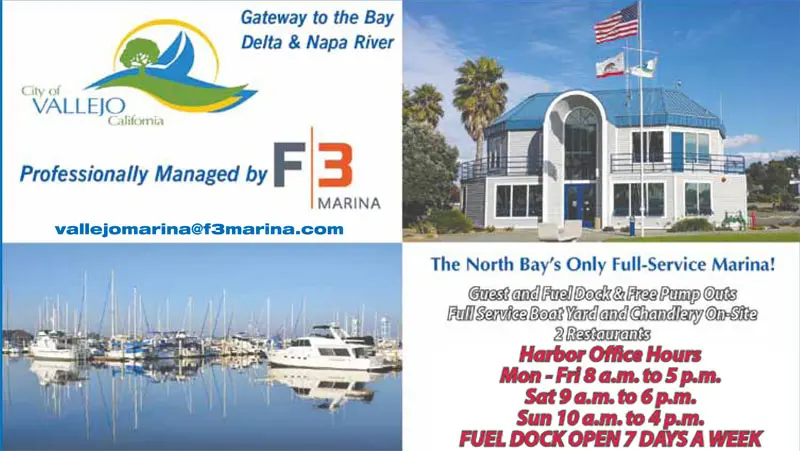
Did You Check Out the First Two Days of AC Racing?
Racing has begun for the 37th edition of America’s Cup with the pointless Louis Vuitton Preliminary Regatta. Not that there’s no point in having the event, but none of the points earned will count toward a result beyond reinforcing or undermining whatever confidence the teams have in their chances of success. The point of the Preliminary Regatta is to give teams a chance to warm up for the actual Louis Vuitton Cup challenger series, starting next week on August 29, and to give all of us on the sidelines some hints regarding who might have the best shot at winning the Cup.
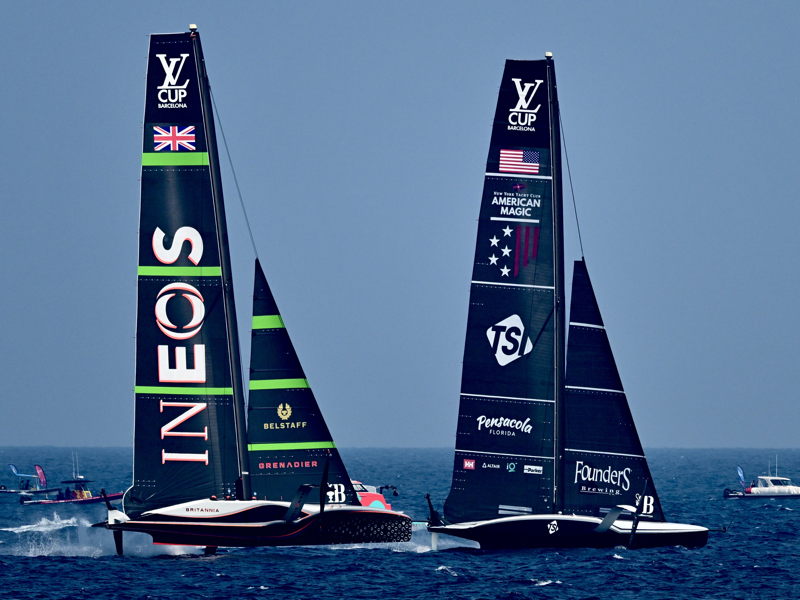
There’s no doubt these boats are fast and technically interesting, but once the crew climbs into their gopher holes there’s not much action to see except the relative position of the boats, aided by computer graphics that now include visualizations of the wind on the water.
The teams will rapidly develop refinements from here, but after this first glimpse it looks as if the English and French have the most work to do and New Zealand, the US, Switzerland (which recovered from a dismasting two days earlier) and Italy all look competitive. They have this four-day series and a few days’ break to dial up their boats and get ready to get real on the 29th.
The following video shows highlights from yesterday’s racing:
It was a great couple of days of sailing in Barcelona, with somewhat patchy southwesterly winds of 12–16 knots that had the boats racing at 40–50 knots. With each team carrying its own peloton of cyclists inside the hull, there’s not much human activity to watch, but foiling at almost 50 knots is a spectacle.
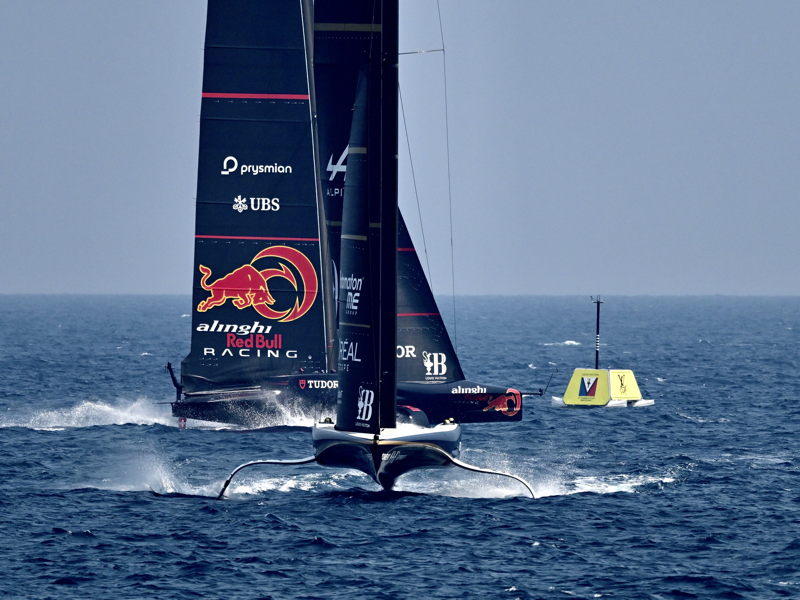
The results after two days of racing show New Zealand (3-0), Italy (2-1), America (2-1), Switzerland (1-1), England (0-2) and France (0-3). We’ll have a more complete report with insights from four days of preliminary racing on Monday. Like so much of sailboat racing, it appears most of the races have been won at the start, with very few passing lanes available to a second-place starter. See the results here.
To watch the racing live you’ll need to subscribe to ESPN+ or be willing to wait 24 hours to watch replays on YouTube. You can see your viewing options (which include flying to Barcelona and chartering a boat) here.
US Coast Guard Sets Port Condition Whiskey for Hawaii County
The US Coast Guard captain of the port (COTP) has set port condition Whiskey for the seaports of Hilo and Kailua-Kona in Hawaii County, due to the expectation of sustained gale-force winds generated by Tropical Storm Hone that may arrive within 72 hours. The Coast Guard is advising the maritime community to remain vigilant and take necessary precautions.
At noon Thursday, the center of Tropical Storm Hone was located approximately 885 miles east-southeast of Hilo, with maximum sustained winds of 40 mph. This morning’s report at 11:00 a.m. PDT indicated that Hawaii can expect to see the effects on land beginning Saturday afternoon.
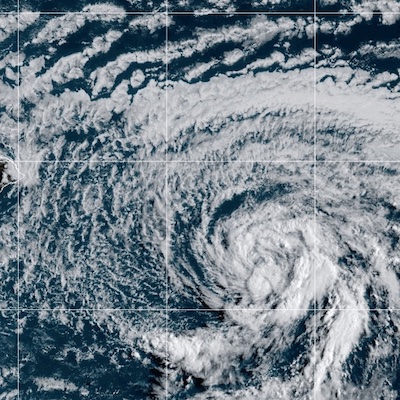
During port condition Whiskey, port facilities are currently open to all commercial traffic, and all transfer operations may continue while Whiskey remains in effect.
In regard to sailboats — “All pleasure craft shall seek sheltered waters.”
Vessels transiting within the vicinity of the Hawaiian Islands should seek sheltered waters until storm conditions subside and anticipate harbor closures at the discretion of the COTP as storm conditions progress.
If and when port condition Yankee is set because sustained tropical storm-force winds (34 knots or 39 mph) are expected within 24 hours, the port is closed to incoming traffic without specific approval from the COTP.
In the meantime, the Coast Guard is sharing these important safety messages:
— Stay off the water. The Coast Guard’s search and rescue capabilities degrade as storm conditions strengthen. This means help could be delayed.
— Boaters should heed weather watches, warnings, and small craft advisories.
— Secure belongings.
— Owners of large boats are urged to move their vessels to inland marinas where they will be less vulnerable to breaking free of their moorings or sustaining damage.
— Trailerable boats should be pulled from the water and stored in a place not prone to flooding.
— Those who are leaving their boats in the water are reminded to update their beacon’s registration and secure all devices safely to their vessel prior to a major storm. These devices often float free from vessels in marinas or at docks during storms and signal a distress when there is none.
— Ensure life rings, life jackets, and small boats are secured. If not properly secured, these items can break free and require that valuable search and rescue resources be diverted to ensure people are not in distress.
— Stay clear of beaches. Wave heights and currents typically increase before a storm makes landfall. Even the best swimmers can fall victim to the strong waves and rip currents caused by tropical storms and hurricanes. Swimmers should stay clear of beaches until local lifeguards and law enforcement officials say the water is safe.
— Stay informed. The public should monitor the progress and strength of the storm through local television, radio, and internet. Boaters can monitor its progress via small craft advisories and warnings on VHF-FM channel 16.
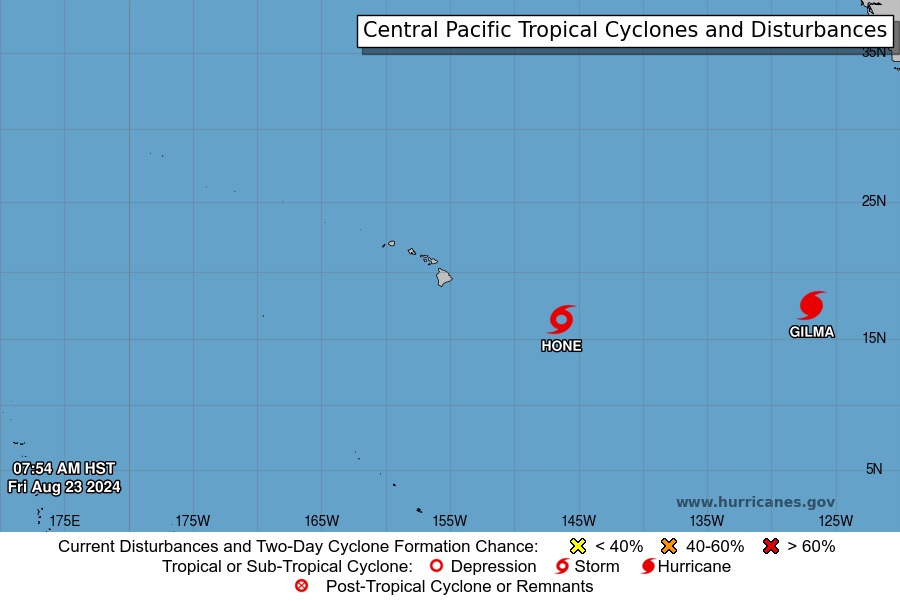
Additional information on current and upcoming weather conditions for the Central Pacific and Hawaii can be found at NWS Forecast Office Honolulu and the National Hurricane Center and Central Pacific Hurricane Center.
You can also find more information on Facebook, X, and Instagram.
This might be a good time to revisit the Storm Prep Checklist created by Mary SwiftSwan from Afterguard Sailing Academy.
Barton Marine — The Bow to Stern in Sailboat Hardware
Made by Sailors for Sailors, Barton Marine has designed and manufactured sailboat hardware in England since 1948. Our range extends over 1800 products providing value and performance for racing and cruising mariners worldwide including from our US base in Virginia. The Barton range includes contemporary marine grade composite blocks, ball bearing performance wooden blocks, and an exclusive Tufnol block selection. The full range of low friction eyes, cam cleats, track and car systems, clutches, winches, Boomstruts, sailing kits and hundreds of accessories sell in over 35 countries globally to owners and boat builders alike. If you have not discovered the Barton range, visit BartonUS.com to explore and find your local dealers.
Where Will You Sail the Labor Day Weekend?
Wherever and however you’d like to sail over the Labor Day weekend, you have just a week to plan and get organized. To help you along, we’re linking our calendar of events, where you can find a range of sailing-related activities, whether racing or non-racing.
On Monday we shared news of several Labor Day weekend events, starting with the Jazz Cup on August 31, hosted by the South Beach and Benicia yacht clubs. And a reminder: If you want to save yourself $25, sign up before midnight, tonight!
If you like small-boat racing, Encinal YC will host the Millimeter Nationals on Saturday and Sunday, August 31–September 1.
San Francisco’s Cityfront will be alive with the 54th International Knarr Championship (IKC) which kicks off on Friday, August 30.
And there’s Humboldt YC’s Redwood Regatta on Big Lagoon on August 31–September 1. On Sunday, September 1, Inverness YC will run their long-distance Hog Island Race on Tomales Bay.
One event that we didn’t hear about earlier (there may be others) is Half Moon Bay’s “Beatle Mania” weekend. This weekend-long party draws sailors from near and far who cruise in for each day’s pre-planned dinner menu.
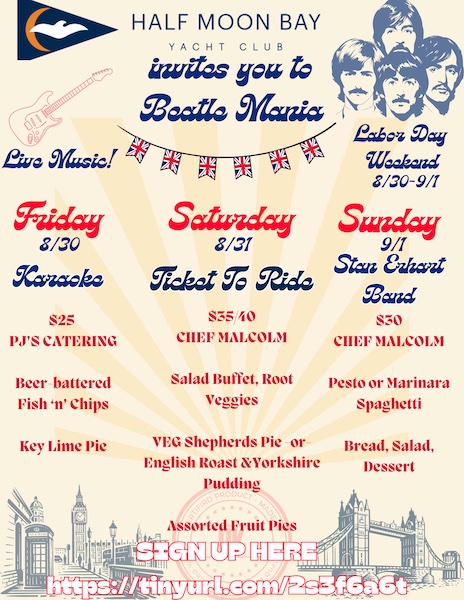
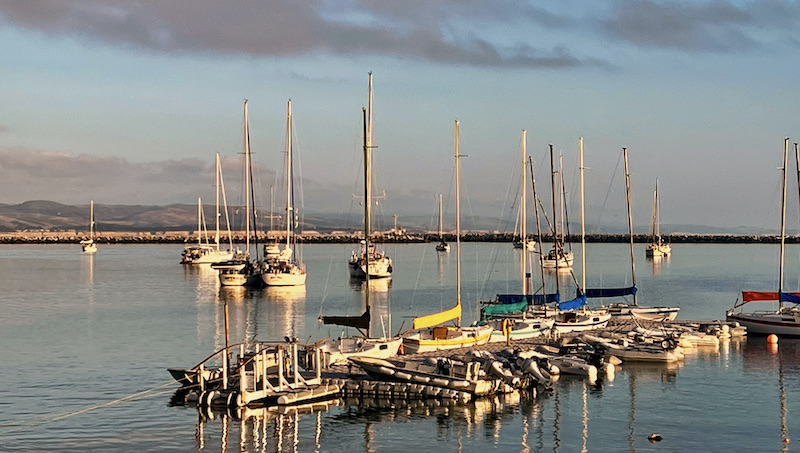
Plan ahead and order your meals here, then head on down to join the Labor Day weekend fun.
Of course, there’s much more sailing happening around the Bay and beyond, other than just on the Labor Day weekend. Check out our full sailing Calendar that covers August, September, and more.
Can you tell we’re excited for a three-day sailing weekend?
Overdue: Max Ebb and Lee Helm Visit a Yacht Club Library
There’s something about growing up within commuting distance of New York City that I can never grow out of: I’m always early for meetings. And when the meeting is on the other side of the Bay, I allow enough extra time for slow traffic on the bridge.
“Research shows that commuters allow a margin of two standard deviations when there’s variation in travel time getting to work,” Lee Helm once asserted. But she could not cite the actual study, so I suspect that she just made it up; I don’t think it applies to Californians, based on my observations.
Traffic was light one evening on the bridges over the Bay, so there I was, 45 minutes early, at the yacht club that was hosting the YRA delegates’ meeting. I decided to pursue one of my favorite activities when I find myself in an unfamiliar club with time to kill: check out their library.
Everything about the room was optimized for reading old books: the comfy leather chairs, the good lighting, and even the “old yacht club” smell, although it had probably been decades since anyone was allowed to smoke a cigar in that space. I browsed some eye-level shelves, then picked up a big book that was displayed upright on an antique side table, full of photos of local racing from the turn of the last century. Most of the photos were new to me — not the usual fare found in photo collections from that era. I was absorbed in the book and did not hear the door open, and was surprised by a stern voice from behind:
“Excuse me. Sir, this room is for MEMBERS ONLY!”
There was an instant of embarrassment until I identified the voice: It was Lee Helm, grad student in naval architecture, performing a very bad voice impression of a yacht club official enforcing the rules. Evidently Lee was choosing to kill time the same way that I was.
“Oh, that sign’s not really meant for us,” I pointed out. “What brings you to this side of the Bay?”
“Tokenism,” she explained. “I’m like, the ‘student member’ of the YRA Board.”
“Good for you,” I said. “If any organization needs some young blood, it’s this one. I’m just here to make sure some of my club’s special events get on the calendar.”
“Finding anything interesting to read?” she asked.
“I just look at the pictures,” I joked, gesturing at the book of old photos. “Some really good stuff from 100 years ago, never published anywhere else. But these shelves are not nearly as organized as I’d expect: There’s a little bit of sorting according to topic, but I suppose with no labels on the shelves, books rarely get put back where they belong.”
“A little random serendipity is cool,” she said as she walked over to a shelf that looked especially dark and moldy, suggesting older volumes.
I followed her there, and pulled out the oldest and moldiest-looking book, a copy of Seamanship, by Luce, published in 1866.
“A great work, in its day,” Lee remarked. “Admiral Luce was the founder of the Naval War College. It’s got one of my favorite diagrams about handling sailing ships.”
Lee quickly found a page showing how to con a full-rigged frigate down a river or channel, with no wind. Only the tide, the anchor and the rudder to keep the ship clear of the shoals.
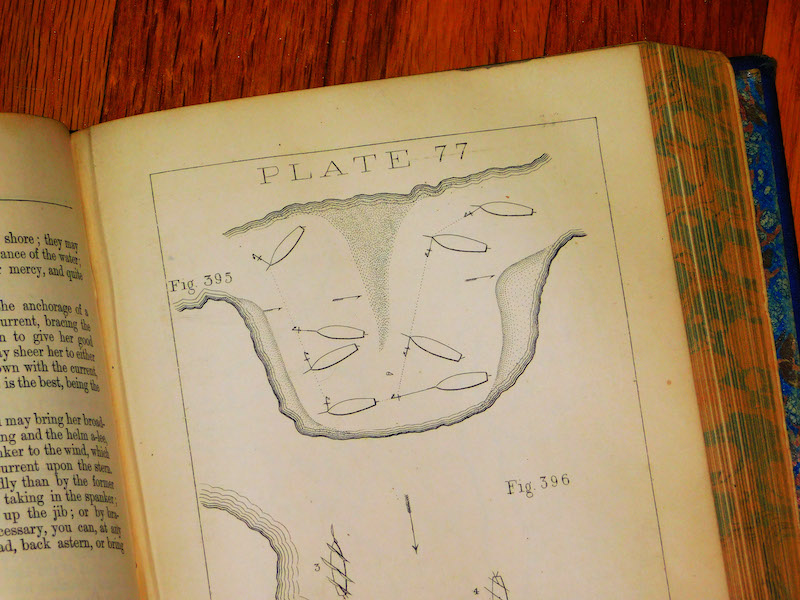
“It probably belongs over here,” she said as she walked over to the bookcase with the glass doors.
Surprisingly, the glass doors were not locked, so we put the book back with some other relics from the 19th century.
“Look at this!” I exclaimed as I picked up another very old volume. “It’s a copy of The Lawson History of the America’s Cup. From 1902! They shouldn’t leave this one unlocked, it’s a first edition and probably worth a fortune!”
Vallejo Marina: Gateway to the Bay, Delta, and Napa River
40′ to 45′ foot slips are now available at $9.97/ft. www.ci.vallejo.ca.us


